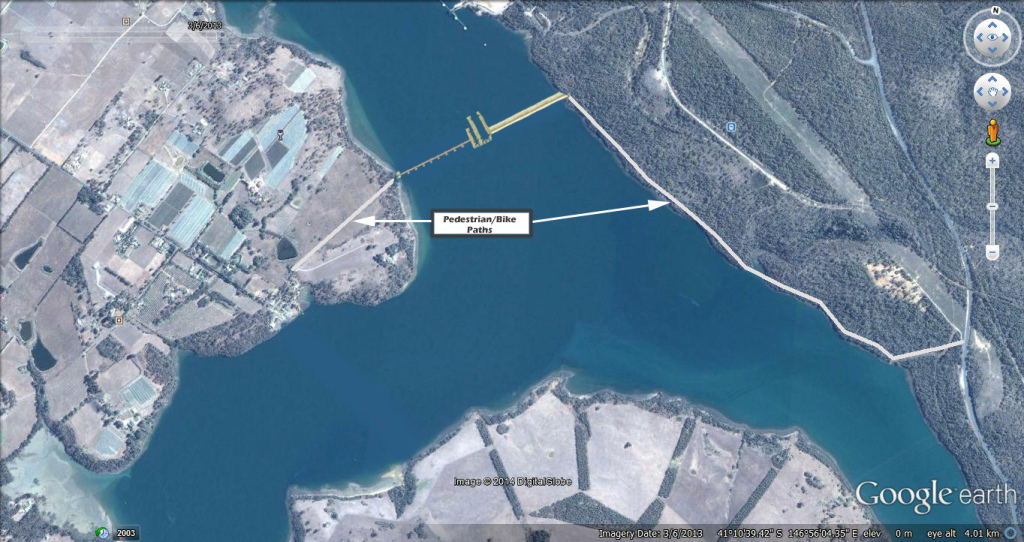The Tamar Lake Concept
Previous studies, carried out for the local authorities over the last 50 years, had identified that the accumulation of silt flowing into the Tamar from the catchments, is deposited in the flocculation zone between Tamar Island and Freshwater Point, then is “pumped” upstream to the Home Reach/Yacht Basin area by the asymmetrical tidal action.
Installing a barrage in the Rowella area, just south of the Bell Bay Port, the Tamar Lake concept moves the flocculation zone beyond the barrage and removes any asymmetrical tidal action in the Upper Reaches.
Studies carried out for Tamar Lake Inc, has confirmed that this change will cause a net export of silt from the Upper Reaches and into Bass Strait with each flood event, and a major reduction in total silt deposition in the Valley.
Not only does this solve the silt accumulation problem, but with resultant 60km long freshwater lake a major new asset for the State is formed with a storage volume of 405 GL, or 80% the size of Sydney Harbour. Tamar Lake provides many quantifiable and unquantifiable economic benefits to the Valley.
With a permanent mid to high tide water level, tourism and aquatic sports are obvious beneficiaries with 24 hour navigation for pleasure and tourist vessels from their berths in Launceston downstream to Low Head, with passage through a lock in the barrage.
The technical studies also showed that the barrage would protect the whole of the Tamar Valley, upstream of the barrage, from sea level rise due to Global Warming. This is particularly important in the low lying areas of Invermay.
Waterfront residential and commercial developments will also receive a major boost.
With freshwater supply currently limited to one small pipe down each side of the Valley, the Tamar Lake will future-proof the supply of freshwater for residential, industrial and agricultural developments throughout the Valley, and in doing so, it will provide a major economic boost to the whole valley, but in particular, the struggling Bell Bay and George Town regions.
The studies have shown that the barrage will not negatively affect flood levels in Launceston, but with the ability to control water levels in the lake, the effect of flood events up to a 200 year flood may be mitigated.
The environmental impact assessments show that while there will be some displacement of natural ecological values, no listed species will be threatened and the freshwater habitats (including Tamar Island Wetlands) will be greatly expanded.
The only species to die will be the imported rice grass.
The formation of the freshwater Tamar Lake does increase the risk of anoxic conditions that may either create extensive algal bloom problems or acidification.
This risk is mitigated by the low water temperature of the cool temperate Tasmanian climatic conditions for most of the year, and the rate of flushing of the waters of the lake of at least 4 times per year due to the huge inflows of 1500 to 4000 GL per annum from the catchment.

